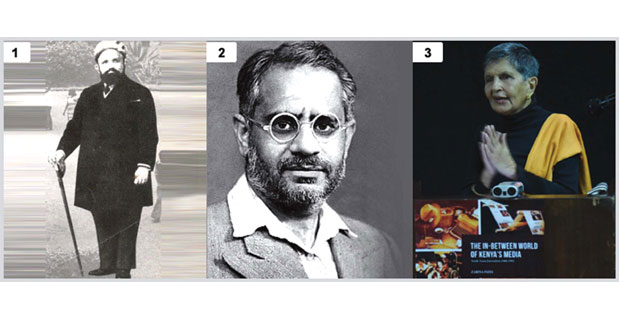A Century of Indian Journalism Saga in Kenya
Kenya Indian journalists founded newspapers and magazines to demand human rights and freedom under colonial rule in the first half of the last century; and during the latter half showed professionalism and ingenuity to reach top positions. Despite facing threats, prison, exile and deportation, they contributed to developing Kenya’s media in no small measure, writes Kul Bhushan
During the first half of the last century, Kenya’s South Asian journalists suffered under the British colonial rule but contributed to the independence struggle by publishing newspapers and magazines. After independence in 1963, the Indian owned newspapers and magazines went out of print.
1. Public spirited businessman Alibhai Mulla Jeevanjee founded the first Indian owned newspaper in Kenya in 1901 to counter racial attacks by British owned newspapers and drove them out of business
2. Fearless Indian editor G. L. Vidyarthi who struggled for human rights but was charged with sedition and jailed thrice. His son, Anil, was charged with sedition 45 years later but let off
3. Zarina Patel, the author of 'THE IN-BETWEEN WORLD OF KENYA'S MEDIA: South Asian Journalism, 1900 – 1992, is the granddaughter of A M Jeevanjee who founded the first Indian owned newspaper in Kenya. She has written numerous biographies of South Asians and is a human rights activist
All this is presented in a magnificent new coffee table book, 'THE IN-BETWEEN WORLD OF KENYA'S MEDIA: South Asian Journalism, 1900 - 1992' by Zarina Patel (Zand Graphics) released on 19 April 2016 in Nairobi. The pre-independence era is mostly presented from archives while the stories of the freedom era journalists are mostly told by themselves or their relatives. Interestingly, the author Zarina Patel is the granddaughter of A. M. Jeevanjee, the founder of the first Asian newspaper. The author of a number of biographies of South Asians and a human rights activist, Zarina Patel took five years to collect personal stories of nine print journalists in the Kenya’s colonial era; and another 28 print journalists; 18 photographers; ten radio journalists in the independence era.
“There is a bullet with your husband’s name on it; get him out of Kenya as soon as possible,” the wife of a Kenya Indian editor, Cyprian Fernandes, was warned at work. At the peak of his career as Foreign Editor of the Nation, he left Kenya within a month. A socialist journalist who had gone to jail fighting for Kenya’s freedom, Pio Gama Pinto, was assassinated in broad daylight as he was leaving for office. Another, Pranlal Sheth, was deported while two, Karim Hudani and Chander Mehra, exiled themselves. Most shocking of all, Joe Rodrigues, editor in chief of the Nation newspaper group, was summarily sacked after 21 years of sterling service. Other Kenya South Asian journalists were regularly picked up for questioning by ‘the special branch’ of the police. Over 45 years after G. L Vidyarthi was imprisoned, his son, Anil, became the last Kenyan journalist to be charged with sedition to date. In 1998, Anil was acquitted after the sedition law was repealed from the Constitution. Among the print journalists in free Kenya, Joe Rodrigues stands out as he joined The Nation as a Sub Editor and rose to become the editor in chief purely on his professional capability and hard work. At the global level, he was elected the president of the International Press Institute. Another sub editor, Alfred Araujo became editor of the Sunday Nation, Cyprian Fernandes rose to the post of foreign editor, Kul Bhushan was appointed as the first business editor, Rashid Mughal became features editor after joining as a proof reader, Norman da Costa as sports editor, while Sultan Jessa and Sham Lal Puri made sterling contributions. This list is almost endless.










Comments.